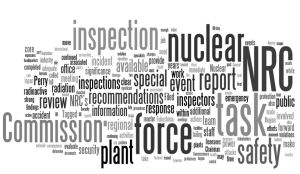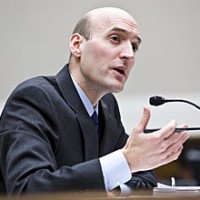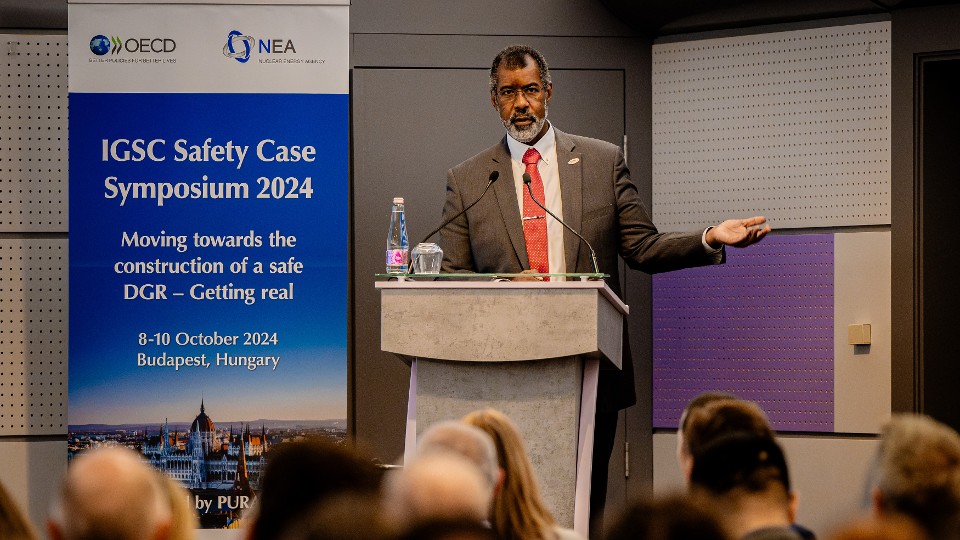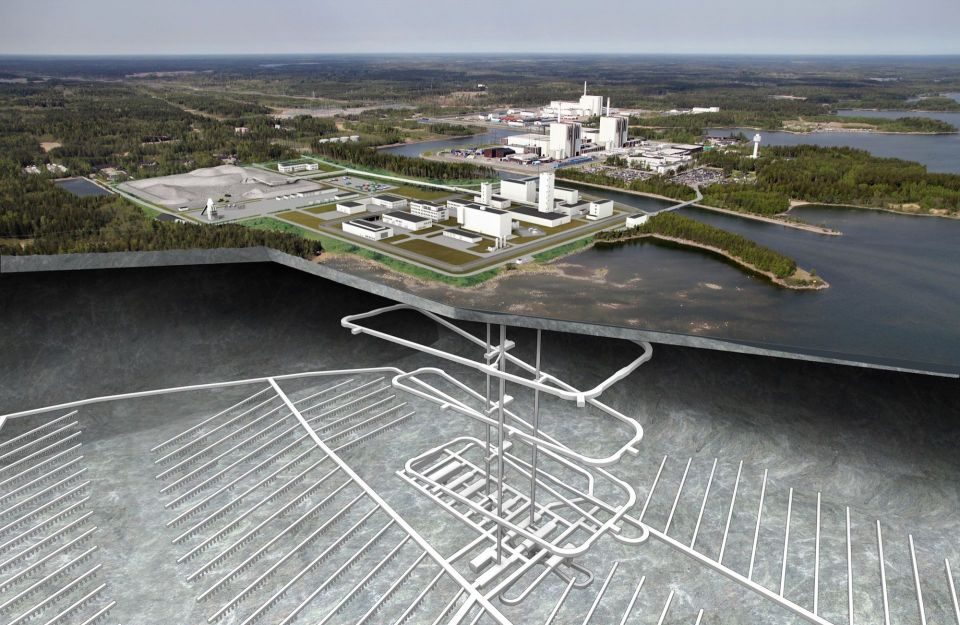Is the NRC on target with its call to redefine nuclear safety?
A report by a Nuclear Regulatory Commission staff task force calls for sweeping regulatory change, but also acknowledges that information about the Fukushima accident is unavailable, unreliable, or ambiguous. What should be the response in the United States to the events in Japan?
In the third of a continuing series, the ANS Nuclear Cafe explores a significant issue affecting nuclear science and engineering by asking a diverse group of nuclear energy professionals for their views on a high-profile issue.
On July 13, the U.S. Nuclear Regulatory Commission issued a 96-page report-Recommendations for Enhancing Reactor Safety in the 21st Century: The Near-Term Task Force Review of Insights from the Fukushima Dai-Ichi Accident-calling for a redefinition of the level of protection "regarded as adequate" for safety at the 104 operating nuclear reactors in the United States.
The NRC's task force wrote in the report that there is a need to "support appropriate requirements for increased capability to address events of low likelihood and high consequence, thus significantly enhancing safety."
National Press Club speech
In a July 18 speech at the National Press Club, NRC Chairman Gregory Jaczko said,
"In its review, the task force did not find any imminent risk to public health and safety from the continued operation of the nation's nuclear power plants. The task force was clear, however, that any accident involving core damage and uncontrolled radioactive releases of the magnitude of Fukushima-even one without significant health consequences-is inherently unacceptable."
The NRC published a series of recommendations including boosting defenses against flooding and earthquakes, and protecting reactors and used fuel pools when there is a complete loss of electricity.
Within the NRC, and in response to the report and Jacko's speech, three commissioners-William Magwood, Kristine Svinicki, and William Ostendorff-signaled that they disagreed with the push by Jaczko to put these changes on a fast track.
Commissioner Ostendorff told the New York Times, "I personally do not believe that our existing regulatory framework is broken."
Nuclear industry response
Industry reaction was swift. The Nuclear Energy Institute's senior vice president and chief nuclear officer, Tony Pietrangelo, said in a press statement that the NRC may be premature in calling for wide-ranging regulatory changes.
"The task force report does not cite significant data from the Fukushima accident to support many of its recommendations. Given the mammoth challenge it faced in gathering and evaluating the still-incomplete information from Japan, the agency should seek broader engagement with stakeholders on the task force report to ensure that its decisions are informed by the best information possible."
Given the wide range of points of view about the NRC report, the ANS Nuclear Cafe asked some American Nuclear Society members to comment here on the task force's report. Following are the responses. Your views on their brief responses or the task force report are welcome in the comments section of the blog.
___________
Stakeholder dialog is important by James Malone
The US NRC has issued Recommendations for Enhancing Reactor Safety in the 21st Century. As I reviewed the report, I found there to be an underlying attribute that is an important element of a strong nuclear safety culture, i. e., a questioning attitude. The task force, while formulating the report, did not let prior evaluations, regulations, or practices bias the conclusions that it reached with respect to reactor safety.
The task force concluded "... a more balanced application of the Commission's defense-in-depth philosophy using risk insights would provide an enhanced regulatory framework that is logical, systematic, coherent, and better understood."
The report recommends consolidating the various rules and guidelines into the regulatory framework to address "extended design basis requirements." This is the lessons learned portion of the process. The learning, however, should not be based solely on Fukushima.
One of the most important lessons learned is related to the impact of events on multiple units at a single site. As has been pointed out, the scenarios considered in the past focused on one unit experiencing an event.
The learning from Fukushima is that multiple unit sites must be prepared to deal with off-normal events at any or all of the units. Reforming the regulatory framework to incorporate lessons learned from low-probability, high-consequence events should be completed as soon as possible. It is also important that there be a dialogue among the stakeholders such that the resulting framework provides the appropriate protection of public health and safety.
Jim Malone is chief nuclear fuel development officer at Lightbridge Corp.
_____________
Getting it right will not be easy or quick by Margaret Harding
The world should read this report with caution. It is a mixed bag of good and bad, as has been well stated by others. My early observation of this report and the presentations that preceded it was that this task force seems to have gotten into a soul-searching exercise based upon the apparent short-comings of the Japanese regulator. That opinion still holds.
While some of the findings are well founded and targeted to potential weaknesses at current facilities in the United States, much of the substance of this report was given over to recommending significant revisions to current regulation.
Reviews and comparisons of what the Japanese regulator did or did not do can provide valuable insight into potential shortcomings in the regulations here. This effort seems to have become an opportunity to make new regulation that has relatively little to do with the events in Japan and how well prepared the plants in the United States are for similar events. Sweeping statements calling current regulation a "patchwork" and stating that a significant overhaul is required seems to me to do the NRC a real disservice.
The regulations under which the U.S. nuclear industry operate are among the most stringent and thorough in the world. They have provided for safe operation of the plants in this county for 40 years. The sweeping reforms recommended here should be approached with great caution.
Ultimately, I am concerned with how the NRC implements this report. Done poorly, they could significantly increase costs in the current operating fleet without improving safety one iota. But if done well, the NRC will get at the real issues, eliminating vagueness in the regulation and improving safety. Getting it right will not be easy or quick.
Margaret Harding, president of 4 Factor Consulting, speaks about the nuclear industry and advises clients on quality, regulatory, and technical issues. On June 28, 2011, she was awarded an ANS Presidential Citation for her role in communicating about events at Fukushima.
_____________
Does the NRC report rest on a false dichotomy? by Robert Margolis
While the NRC task force report provides many helpful specific recommendations (station blackout mitigation, better used fuel pool makeup), there is an over-arching theme of an assumed conflict between risk-informed regulation and defense-in-depth permeating the document.
This is a false dichotomy. Defense-in-depth has no meaning without a risk context to provide which barriers and the amount of redundancy that are needed to ensure public health and safety. Adding requirements or systems in isolation could merely add redundancy where it is not needed and actually miss real safety problems while chasing any particular "issue du jour."
Public health and safety are not served by a useless debate on how to codify and promulgate obsolete concepts or artificial distinctions from the past.
The future belongs to those who develop and implement a coherent framework in which risk-informed models and defense-in-depth designs coalesce into a regulatory paradigm. It is one that provides strengthened public health and safety in addition to clearer guidance that the U.S. nuclear fleet can more easily interpret and successfully execute.
The NRC must realize that the concepts of risk-informed and defense-in-depth are not competing methods, but elements of the same methodology that will bring regulation of the US nuclear fleet into the 21st century.
Robert Margolis, PE, is a nuclear engineer with more than 24 years experience as a reactor engineer, startup test engineer, project engineer, and safety analyst.
_____________
Mixed response on the NRC report by Jack Gamble
The initial statement that all operating nuclear sites are safe is the most important line in the report. I was also happy to see recommendations on emergency plans addressing multi-unit sites. Taking another look at Station Blackout (SBO) equipment and especially the operation of hardened vents during SBO is another area where the industry can learn from Fukushima. Finally, I was pleased to see the report clearly state that licensing of the Westinghouse AP1000 and GE Hitachi Nuclear Energy's ESBWR reactors should not be delayed due to Fukushima.
I disagree with the recommendation to change the framework of the NRC Reactor Oversight Program because of a foreign disaster affecting a foreign regulator. Fukushima should not be considered a condemnation of the NRC. Knowing what we know now, it's reasonable to argue that the NRC has better prepared plants in the United States, given changes made after 9/11 and the command structure that doesn't allow chief executive officers and politicians to dictate control room operator actions.
It's important to remember that the report was written by six individuals based on incomplete information. The recommendations should be reviewed by the entire NRC staff with input from the industry and the public before being written into law.
Jack Gamble is a nuclear engineer. He blogs at nuclearfissionary.
_____________
Falling Flat on Its Face by Paul Dickman
The report released by the NRC's Fukushima task force fell flat on its face, but this has nothing to do with the report's content. Rather, the effort by NRC Chairman Jaczko to control his fellow commissioners hit a buzz saw when the other commissioners objected to his efforts to direct the process for implementing the task force recommendations.
On July 18, Jaczko gave a speech at the National Press Club. This was the day before the NRC meeting to discuss the task force report. It was an obvious public relations ploy to try to capture the headlines and control the story lines. Some of his remarks and responses to questions, however, caused alarms in the industry, as he linked timely passage of the recommendations to new reactor licenses.
While some in the media saw this as a bit of grandstanding, for NRC staff and the industry this speech signaled a new and disturbing direction. As it turned out, however, Jaczko failed to note that he was not speaking for the NRC but only voicing his personal views.
The next day it was the turn of the full NRC commission and it was apparent that Jaczko had not kept his fellow commissioners informed, and was also unlikely to get their support for his proposed process.
In addition, to counteract the publicity blitz emanating from the chairman's office, two other NRC commissioners-William Magwood and Kristine Svinicki-took the unusual step of providing public statements outlining their own approaches to the task force recommendations and reassured industry and the NRC staff that a careful and deliberative process would be followed.
Following the commission meeting, Jaczko also had to address reporters to clarify that it was not his intention to hold new reactor licensing hostage to passage of the task force recommendations.
This was not a good way for the NRC to launch what should be a serious and far-reaching deliberation on the future of reactor safety.
Paul Dickman was a career federal scientist and served as chief of staff to NRC Chairman Dale Klein.
___________
What are the intrinsic and fundamental issues? by Will Davis
Having followed the situation in Japan very closely in order to serve the readers of my blog-the majority of which were, until about two months or so ago, decidedly non-nuclear people-and after having read the report, I wonder if the report itself really addresses any intrinsic, fundamental issues in Japan-even if all its recommendations are sensible, which they seem to be.
Following the development of the immediate post-accident recovery plans, various Japanese media began presenting-disguised-a number of people from various agencies and companies that appeared to claim that there was all too cozy a relationship between Japan's large power companies and Japan's Nuclear and Industrial Safety Agency (NISA).
There were further implications made that since NISA was a branch of the trade ministry, it really didn't have an unbiased position. Further, reports of retired private executives having positions in regulatory bodies didn't help matters, and recently the Japanese government has proposed a restructuring of its overly complicated regulatory structure in order that it might be closer to the arrangement that we have here in the United States.
It was such reasoning that spelled the end of the Atomic Energy Commission here-how can you have an agency that both promotes and regulates? The final opinion was that we can't. The Japanese find themselves facing a similar question while also asking why their regulatory structure did not adequately see to the public safety.
Were we to simply apply plant-specific lessons learned at Fukushima to all U.S. plants, we might thus miss the bigger picture explaining how a nation with almost entirely coastally-based nuclear plants didn't expect worst-possible tsunami effects. The answer may be a lesson we've already learned.
Will Davis is a former U.S. Navy reactor operator qualified on S8G and S5W reactor plants. He writes and publishes the Atomic Power Review blog.
___________
Closing thoughts
Reactions in the news media to the NRC report were mixed. The Washington Post, which has adopted a realistic approach to nuclear energy, said in its editorial pages on July 15 that the NRC should not throw the baby out with the bathwater:
"The NRC should use this review not merely to respond to a single event but to ensure that it is actively assessing low-probability but high-consequence risks. Polls show that Americans largely haven't lost confidence in their nuclear plants. Government regulators should give them every reason not to."
The New York Times editorial a week later on July 23 took an alarmist tone, asking if a Fukushima-type event could happen in the United States:
"The odds are remote that this country will confront a similarly powerful earthquake followed by an even more destructive tsunami-the twin blows that disabled Fukushima. But the possibility that something equally unexpected and unplanned for could exceed current defenses at American plants cannot be discounted."
The Times, however, acknowledged NEI's point that stakeholder engagement is needed to get the right regulatory approach in place. That said, the newspaper also called for the changes to regulation to be put on a fast track:
"There is no doubt that the commission would benefit from getting additional feedback from the industry, advocacy groups, the agency's own experienced staff, and other experts to supplement the task force report. That could all be easily done in the next few months and must not be an excuse for delaying approval of the recommendations."
The report calls for "redefining the level of protection that is regarded as adequate." If that's the case, just exactly what has the agency been doing up to now? This is not gratuitous skepticism. If a federal regulatory agency is moving the goal posts, then it's necessary to take a close look at its reasons for doing so.
Yet, at the same time that the NRC calls for change, it acknowledges that the information it has on what happened at Fukushima is "unavailable, unreliable, or ambiguous."
Even if more were known with certainty, there are lots of reasons why the 40-year-old design of the Japanese reactors at Fukushima would never be built in the current era. The task force report takes pains to point out that there is "no imminent risk" for U.S. nuclear reactors. The NRC needs to take care that it doesn't overreact to problems in Japan that don't and won't affect the U.S. fleet.
_______
Dan Yurman publishes Idaho Samizdat, a blog on nuclear energy, and is a frequent contributor to ANS Nuclear Cafe.
















